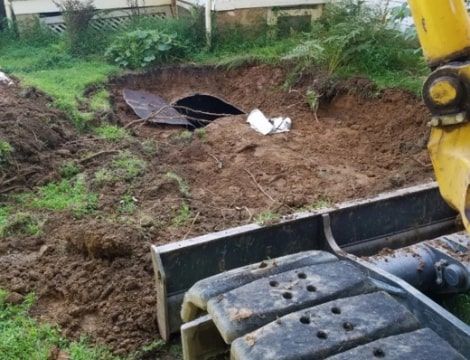Underground Oil Tank Removal Cost and Process

But in recent years, natural gas has almost replaced the oil fuel. And today, less than 7% of American households depend on fuel oil. Many have decommissioned their large unwanted oil tanks while many yet to do it. If you also want to get rid of your unwanted large oil tank, but don’t have much knowledge about how oil tank removal process works and what is underground oil tank removal cost in NJ, then this guide is for you. Today, we will have a look at what is the process of underground oil tank removal and how much does it cost you.
How to remove an oil tank
Well, first of all, don’t consider it as a DIY task. No doubt it is not a complex process, but there are many instances in the past where accidental spills occurred during the removal process. And believe me, if that happens, it will be a very expensive affair. Therefore, it is always advised to hire a qualified oil tank removal contractor to do the job. An experienced oil tank removal contractor has all the equipment, machinery and tools to decommission the tank safely.
Here is the step by step guide on underground oil tank removal cost and process:
Step 1: Remove oil from the tank
First of all, oil needs to be removed safely. Fuel oil is categorized as a hazardous material. So it should be removed carefully. Your oil tank removal technician removes the oil tank gauge, insert the hose into the tank, and connect it to the pump to suck out the uncontaminated oil. The underground oil tank removal cost in NJ is higher than the removal of above ground oil tank because it needs to be excavated.
Step 2: Cut the tank
After removing the oil, the tank is cut into pieces using a metal-cutting blade. A wide open cut is made to make it easy to remove sludge. Pieces of a tank are removed carefully.
Step 3: Remove the sludge
Over the years of use, sludge has accumulated at the bottom of the oil tank. It is highly hazardous to health and the environment and should be disposed of safely. Your oil tank removal professional removes the sludge and scoops into the bucket. This sludge is poured into the drums and taken to a special waste management facility.
Step 4: Cut the pipes and move the tank
After removing the sludge, technicians will cut the tank’s vent and fill pipes and remove them from the foundation. Holes are filled with concrete patching compound. The tank is removed and your contractor is all set for the soil sampling.
Step 5: Soil sampling
It is the final step of the underground tank removal process. Soil sampling will take place to find out whether the soil is contaminated. If there is no soil contamination, your oil tank removing company will prepare the report and give the certificate of tank removal to you. However, in the case of soil contamination due to oil leaks and spills, soil remediation is required and performed by your oil tank removal company.
How much underground oil tank removal cost?
No doubt underground tank removal is a costly process, but oil leaks and spills are even more costly that may lead to financial disaster. The cost of underground oil tank removal will be around $1000 to $3500. It depends on various factors such as size, placement, and location. Horizontally constructed tanks are cheaper to remove than vertically constructed tanks. If the oil tank location is accessible to machinery, it will excavate the tank. Otherwise, excavation has to be done manually which cost more than the excavation by machinery. So, the cost of underground tank removal varies from project to project. This was the basic guide on how does underground tank removal process work and how much underground oil tank removal cost in NJ. So get your unwanted underground oil tank removed before it gets too late.







